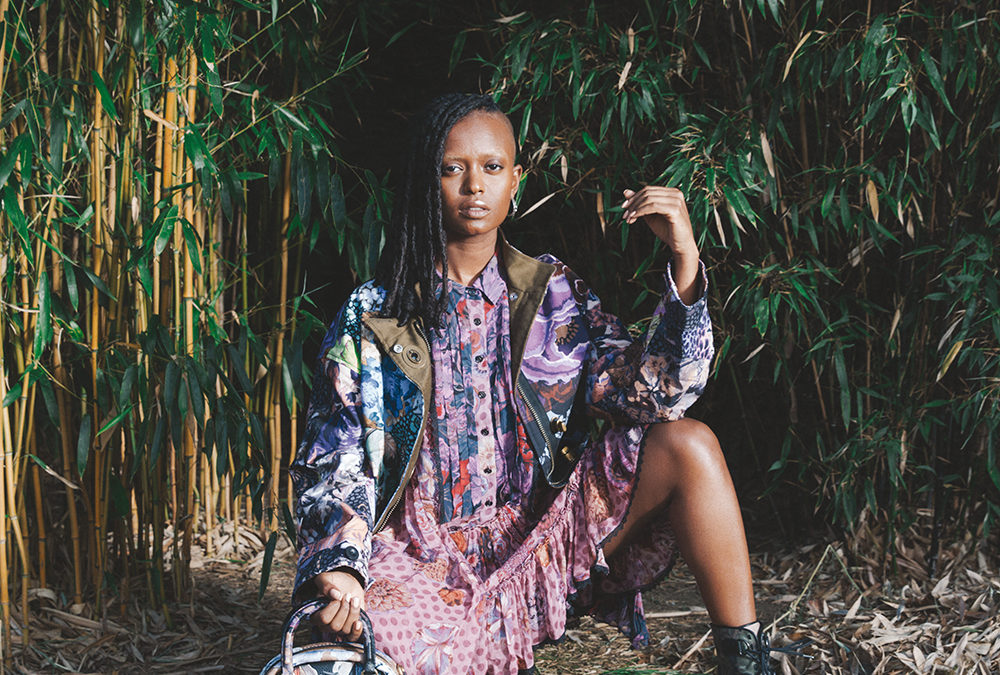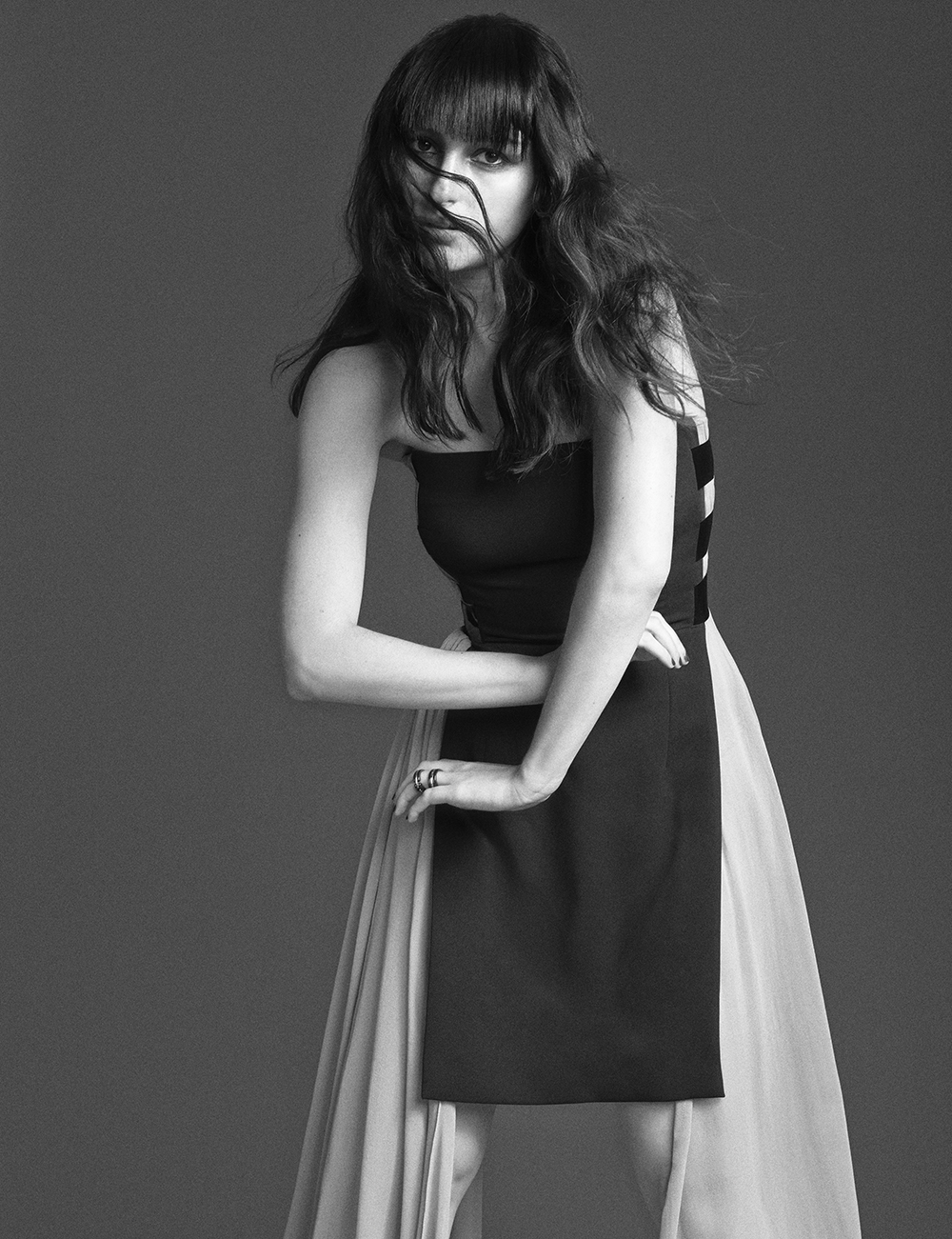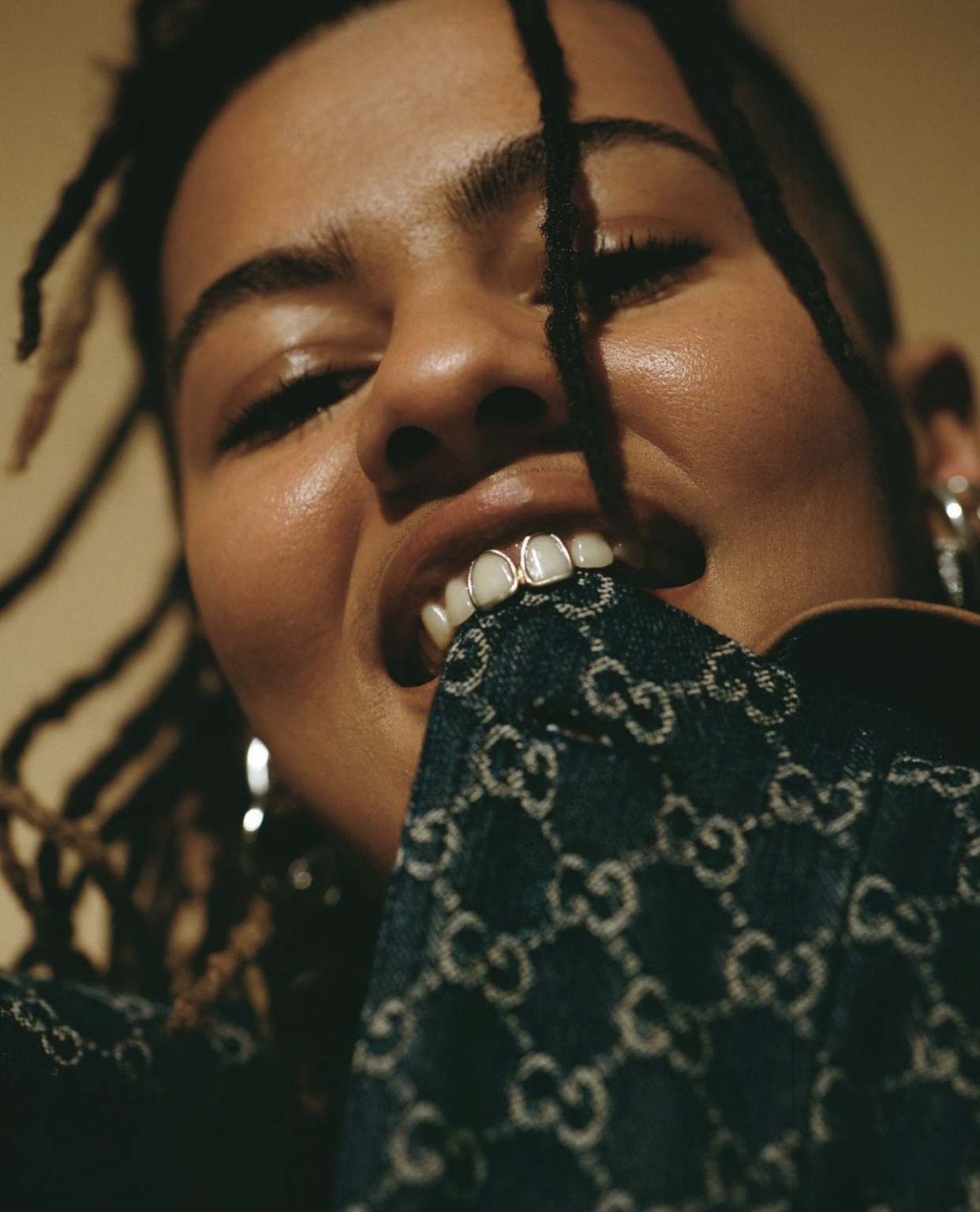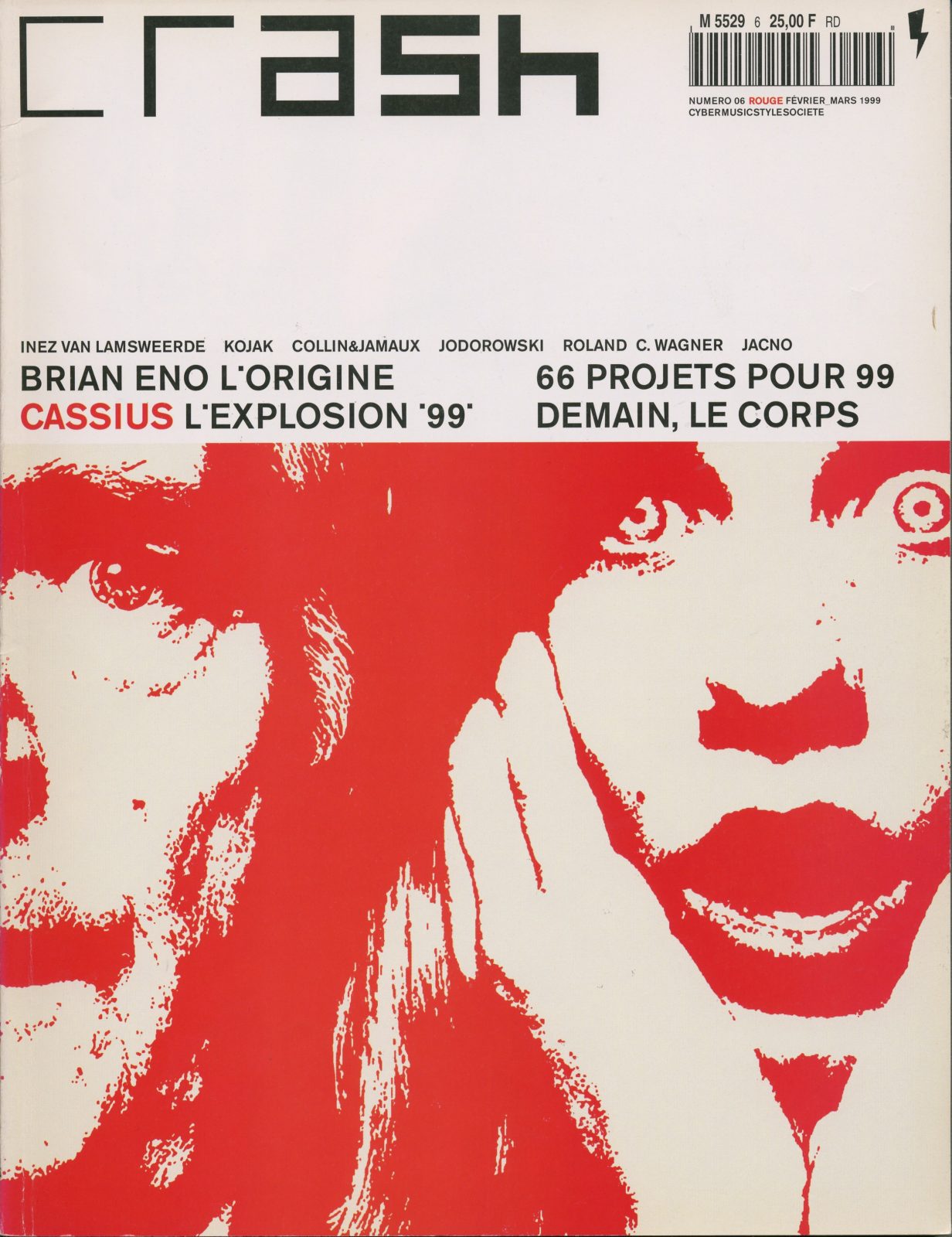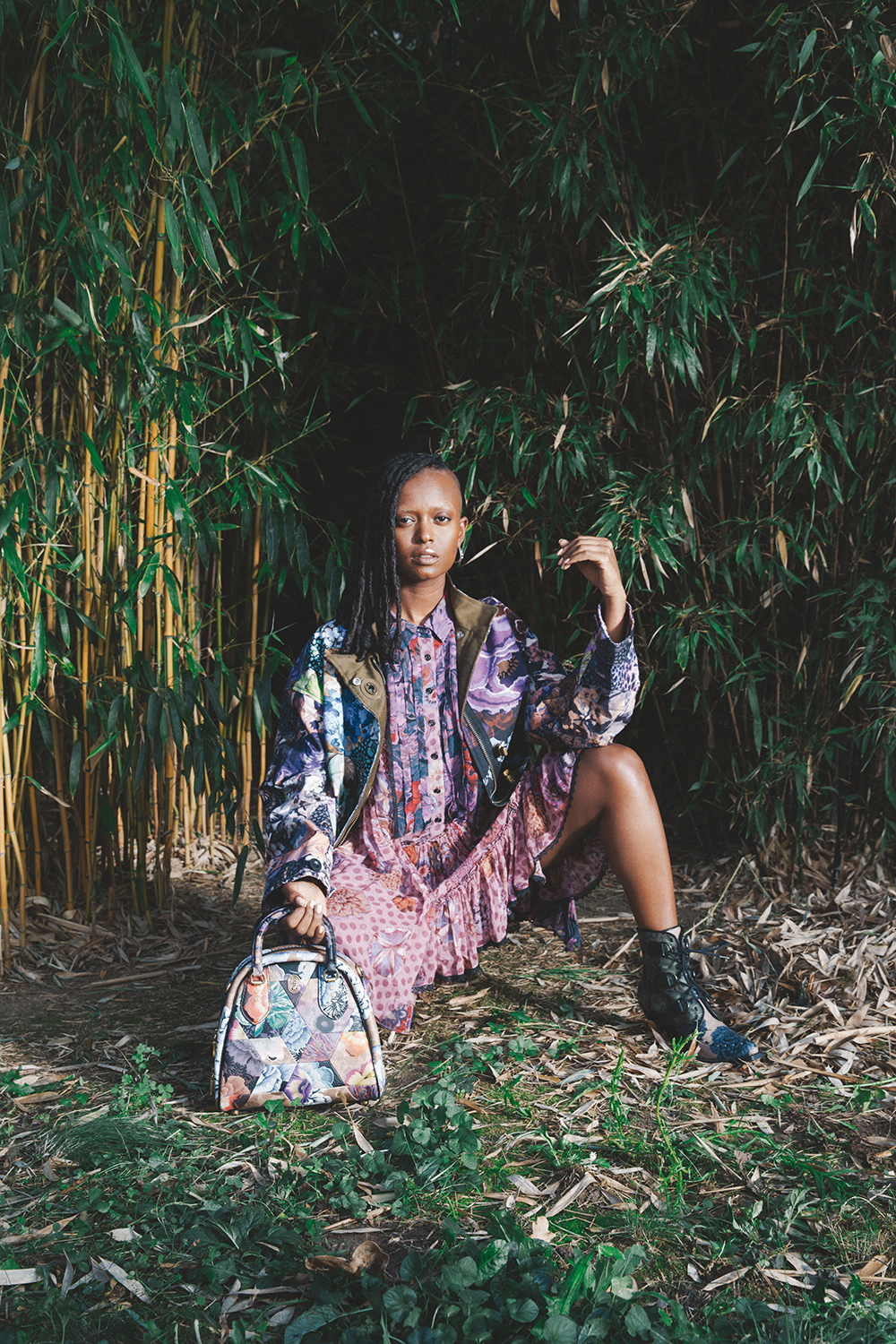
A MEETING WITH KELELA AND MISCHA NOTCUTT
By Crash
For our issue 90, devoted to experimentation in every form, we gave the floor to two women who each take bold creative risks in their respective fields. On the one hand, Kelela, who spent years immersed in jazz before creating a sonic universe from the fusion of R’n’B and electronic music. A hybrid sound blending the power of a warm, soul-tinged voice with layers of robotic synths, Kelela lays herself bare through her music. In conversation with her is Mischa Notcutt, her artistic director and stylist, who, like many others of her generation, prefers to don many different hats, from DJ to casting director. She is also the woman behind London’s legendary PDA party, a queer and inclusive club night where every type of madness is permitted. Together, they represent a new kind of experimentation that blends Afro-futurism, feminism and free sexuality, liberated from complexes and taboos.
Kelela: What is your relationship to experimentation and how did it grow into what it is now?
Mischa: Experimentation is something that I’ve always had a relationship with—I’ve always been intrigued and inspired by things around me. However, I have battled with my fear of putting things out into the wide world. Even when I was younger, just sharing with other people my intrigue, my wanting to discover or test things in all aspects was scary.
Kelela: What were your first experiments, the earliest things you can remember?
Mischa: (laughs) I think I definitely wanted to experiment and make things. Things I couldn’t find or things I saw and couldn’t get. So I made a whole jacket out of bubble wrap. (laughs) And platform shoes out of paper and sellotape.
Kelela: What did that look like?
Mischa: Trash. (laughs) That was probably one of my first experiments. I was in a small town in England, the youngest of three, not allowed to go to the beach with my friends. (laughs) But regardless of that, I just wanted to try different things all the time. That was probably one of my…
Kelela: Your moments.
Mischa: Yeah, it was my bubble wrap coat. What about you?
Kelela: My experiments were really minimal; I didn’t construct anything in that sense. At that time, all you had were your clothes. Different groups of people wore specific things. The black girls at my grade school wore a particular denim, you know. It was stretch Italian jeans. That’s basically what everybody was obsessed with. It was Parasuco and Sergio Valente, that’s the trouser that you wear. Then there’s a sneaker and a matching top. The skaters wore skater clothes. The white girls who played field hockey wore Umbro shorts and flip flops so it was very specific. I remember wearing Vans, it was my experimenting with sort of crossing those lines. Just feeling very avant-garde for wearing Vans with Parasucos. I was made fun of because it wasn’t making sense, it wasn’t computing. That was like a big moment I remember from middle school. I think I was in the seventh grade.
Mischa: Doing that is so important. I just felt like I never really fit in at school. I know that’s a typical story for most queer people. But I think it’s one way of saying: “None of this feels right. I like a bit of this and I like a bit of that but I don’t like all this”, you know.
Kelela: Totally, that is the first expression of that. It comes out a lot in our fashion. Kids don’t really have much else. There’s music also.
Mischa: It totally goes with music. The things that you’re supposed to seemingly like when you’re at school and the stuff that you’re actually listening to. (laughs)
Kelela: That’s true. I’m trying to think of the things that were “secret listens” or things that I was listening to alone. I guess for me that was jazz. Jazz music was something that I knew I couldn’t create any kind of camaraderie around with my friends. My friends and I aren’t going to sit around and listen to Ella Fitzgerald or Sarah Vaughan together.
Mischa: And none of them knew you were listening to jazz?
Kelela: My close friends may have known but I remember in sixth grade I sang “L.O.V.E.”, this jazz standard, for a talent show. I remember it was like me breaking out and being like: “I think this is cool”. (laughs) I just remember not feeling it was all the way cool but doing it anyway. None of my peers were on that and I felt different. But then I also did another thing in the same talent show. I did a Groove Theory song with two of my friends. We sang “Keep Tryin”. And that was my moment to also let you know that I am an around-the-way girl and I do understand what’s going on right now. You know what I mean?
Mischa: (laughs) I’m still here!
Kelela: Exactly, I’m still here. So yeah, that was kind of my first one, I think. The first music I was listening to outside of the consensus. Jazz and world music.
Mischa: How did you start listening to jazz?
Kelela: It was through both my parents who are really into jazz. My dad maybe more so than my mom, but those were the records that I had. We had like twenty-five records max. It was this very fixed collection of jazz music—some vocal, some instrumental—and like Miriam Makeba and other world music artists. And then the rest of the collection was pop, R’n’B and soul. So it’s literally the scope of everything that I’m really into right now, which is so interesting and funny, you know. It would be two or three Janet Jackson records, two or three Whitney Houston records and then musicals and jazz.
Mischa: What musicals?
Kelela: The first musical was definitely The Sound of Music. Obsessed. I was obsessed with Maria.
Mischa: I think it was really emotive. I love the way musicals are so emotive, especially in the theater. Watching Les Misérables or Miss Saigon… just the power and emotion. Which I don’t think all performers give now necessarily.
Kelela: It’s so interesting that you say that, I never connected these particular dots with regard to my performance. Because when I’m on stage I’m in a movie, period.
Mischa: It does give Bodyguard vibes sometimes, you know. (laughs)
Kelela: It’s so funny, my first musical that I ever saw in person was Sarafina! And I think there’s something about just the practice of going. You know, like this is important for you to see. Spending energy to go on an outing that is not about your peers… even though I developed a fear throughout my childhood of experimenting or wanting to fit in. There were things instilled in me at an early age that made it easier for me to do it. To take the plunge once I decided I wanted to pursue music in a real way. The ultimate experimentation for me is writing. You know, when I made music for the first time. And wanting that music to feel like it hits the intersections of what I think doesn’t exist in the world. But yeah, the connection between musicals and performance is really interesting. What was that for you?
Mischa: I was obsessed with TLC from an early age, even before CrazySexyCool. The first record Ooooooohhh… On the TLC Tip… I could not believe that there was a girl on a record with a condom in her frame. I think this is what actually inspired me to start making bubble wrap clothes. (laughs) I was just hella young and felt like I could do anything I wanted to. I don’t necessarily have to show it but I can do it, you know.
Kelela: Just go and be weird.
Mischa: Yeah, being weird, exactly. I had a big soundtrack going through those years. Venturing forth into being a creative.
Kelela: What were the things you were into that you knew your peers were not?
Mischa: Pretty much everything. (laughs) It wasn’t that they were against it, it’s more that I was surviving through school, you know what I mean. I think getting into art school, I just knew I needed to get out. Those years were just about surviving I suppose.
Kelela: For sure. Trying to survive in a suburban white context and feeling different and othered created a big reliance on media and television to show us something different. I think it was very different for you guys growing up in the UK than us in the US. First of all, there’s less people so the way that things can rise to the surface is so much more quick. Any subculture can quickly and effectively rise to the top. That’s been happening since forever.
Mischa: True.
Kelela: Punk culture, then dance, 4/4 culture into all of the club music traditions that are a conversation between people in the US and people in Britain. When I was in high school I remember Napster came out when I was in the tenth grade. It was the first time I had made contact with it and I remember discovering Artful Dodger and other things that were very much in the mainstream [in the UK] at the time. Or just any garage music or any kind of grime. All of that was clearly happening at the forefront over there…but for us, it was like a secret, there was literally no contact. I remember feeling like I was peeking into some secret world. That’s literally what it felt like—like I was plugged in to something else. It’s another thing that was a huge moment in my development. My relationship with music from the UK is deep and so much of my experimentation is situated in that conversation.
Mischa: Yeah. But Napster, wow…
Kelela: It was a huge moment in music discovery. While people were paying attention to the pirating aspect of it, I was literally finding out about whole other sounds that I would have never made contact with if it weren’t for the internet.
Mischa: I think the first time I heard garage, it was a speed garage tape so it was before any mainstream garage. My sister had brought back that tape from university.
Kelela: Oh god, when you have an older sister also it really helps. I’m an only child, so…
Mischa: Yeah it really, really helps! And also, it was terrible. She was really into New Kids on the Block when I was younger. I was just like: “I don’t understand what this is but I’m not that into it”. (laughs) So yeah, she brought back this speed garage tape and I could not stop listening to it. I think she’d left it at home actually and I found it. But that was just by chance. If you’re in the suburbs of the suburbs, you’d have to get this music from an old sibling or cousin. That’s why Napster was so great for finding new music and opening us up to so much.
Kelela: For you and for me, there’s this thing of “can’t wait to get out of this suburban context”. We both wanted to get into a city to really flourish. I knew it was necessary, to be around other people who are experimenting.
Mischa: So where did the experimentation of mixing electronic and R’nB start for you?
Kelela: I think it has everything to do with the music I was listening to growing up all the way up to the point of writing music. I started writing music in a band called Dizzy Spells but when I went to make something that felt truly like me, I knew I wanted it to sound more electronic I guess. I wanted it to feel experimental…in a digital/technological way. I think it was on MySpace, I started ripping instrumentals from different instrumental artists. I remember Flylow being one of those people. So I would just rip it, write a song over it and send it to them in the hopes of collaboration. I did that maybe four or five times and then got my first collab’ with an artist called Daedelus. I did that right after moving to LA.
Mischa: That’s where you met all the Fade to Mind crew?
Kelela: Exactly.
Mischa: And that’s how the Cut 4 Me infamous mixtape was born.
Kelela: Yeah, that was the lead-up. One of the songs that I made was with a friend named Leo and that was heard by Teengirl Fantasy. Essentially, Total Freedom a.k.a. Ashland Mines, another friend (and incredible artist/DJ), put me in touch with a bunch of producers that he knew would work perfectly with my approach to singing and songwriting. I think he heard where I was trying to go. He’s the person that put me in touch with the Fade to Mind and then Nightslugs crews. And the mixtape came about from that period in LA.
Mischa: There seems to have been such an energy in LA at that time, right?
Kelela: There was.
Mischa: Because it’s kind of crazy, all the music that came out of there. Obviously your mixtape but then Nguzunguzu, Kingdom… even the crossover with Night Slugs in London which, from an outsider point of view, still felt very LA. At the time I was like: “What is going on?”. Even with Fatima Al Qadiri, that sound sort of spread out. There was definitely a specific sound, you know. Even though I don’t see LA as a club landscape, I really wish I could have seen some of the things that were going on at that peak time. There was Mustache Mondays right?
Kelela: There was Mustache Mondays, a party that Total Freedom, Nacho Nava—R.I.P—and John Peace threw. I actually remember the first time that I met everyone. I met all the people at the same time, it was at a New Year’s Eve party. Ashland asked me to come and I remember Nguzunguzu and Kingdom were DJing. I remember hearing a lot of these sounds that I’d always wanted to hear for the first time—a lot of R’n’B vocals over grime beats basically. It was a lot of edits that I could only think of in my dreams. It was exactly the intersection of what I’d wanted to pursue. That was the part for me that was so exciting. Even aesthetically, just walking into this party, everyone was experimenting with all types of stuff. It wasn’t a singular aesthetic and that was really comforting. Everybody felt like an outcast. Which I think is similar to the energy that existed at PDA, the party that you threw in London. It’s a feeling that all of these people are the source for so much inspiration in both the music and fashion worlds—they represent the underground, the avant-garde. That was a really cool time in LA. Do you remember that time when you felt like you came into a sort of pocket?
Mischa: I think everything we’ve done together—from the first shoot that we ever did to see if we could actually collaborate—what I’ve really loved is incorporating all the things you are—where you’re from, your interests. Growing up in DC but also being Ethiopian, your relationship with anime and afro-futurism, being very accessible…but at the same time not accessible. Playing with all these kinds of opposites. Each aesthetic choice we make is intersectional…down to how we adorn your dreads. Nothing is quite what it seems.
Kelela: Totally. That was so hard for me to express before working with you. I really wanted that to be the language and the brand of Kelela. But I didn’t quite know how to make those intersections clear. Something that is both familiar and otherworldly. A way to celebrate myself, play up what I’m already giving. It’s almost like being too close to the painting to really see what it looks like. That very first shoot with Campbell Addy was really pivotal. The album artwork was informed by a lot of what we did that day.
Mischa: Going back to the thing I said in the beginning of wanting to experiment with a certain fear of it, you know. The fear can hold you back but it’s also kind of exhilarating.
Kelela: Totally. For the artwork I remember not being clear about what I wanted. The music felt familiar but also kind of out there in a way. Trying to figure out what that looked like was really hard for me and I remember that shoot made it feel like it could be a real thing. In general, our working together has allowed me to experiment in ways that I just wouldn’t alone.
Mischa: That goes back to what you were saying. Sometimes you can be too close to the painting to see it but at the same time, I feel like you have it already. What can be beautiful about collaboration is just the back and forth, you know. Mixing what you have and what I can see. It’s fun.
Kelela: It’s really fun. I really like being in conversation and it helps when somebody can mirror something back to you. And it also affected my confidence. It’s interesting how trying new things gets me closer to feeling like who I’m presenting myself as is who I actually am. It’s a really cool thing to experience. I think it has also come out in the videos, the things that we’ve tried with hair and make-up and creative direction. The “Frontline” video was a Mischa Notcutt production. (laughs) CGI Kelela in her own Sims universe… I have a real comfort in risk-taking when it comes to sound. When it comes to aesthetics, there’s more fear. I feel more scared. I’ve learned to make things not so deep and there’s a way that you operate that illuminates the impermanence of everything. With you I feel like even if our first attempt isn’t what we were going for, it can be changed and we can always replace it with something new. That kind of approach has been very liberating for me as a person and an artist. There’s this sort of lightness.
Mischa: I think it’s kind of funny that you say that because on my side, it’s been an honor. It has helped me confront a lot of fear as well. With anyone that’s putting stuff out that comes from such a sincere place, a place where you are being vulnerable into the stratosphere. The support of us believing in each other, you know. And being on that journey together. You’re not always taught that, how to believe in yourself and believe in other people. And not just in an enabling way. It’s like, “we can do this!” or “why can’t we do this?”
Kelela: I think that’s the spirit you bring to the table. (laughs) It’s been so freeing and it’s a great place to end our conversation: you can do this, we can do this!
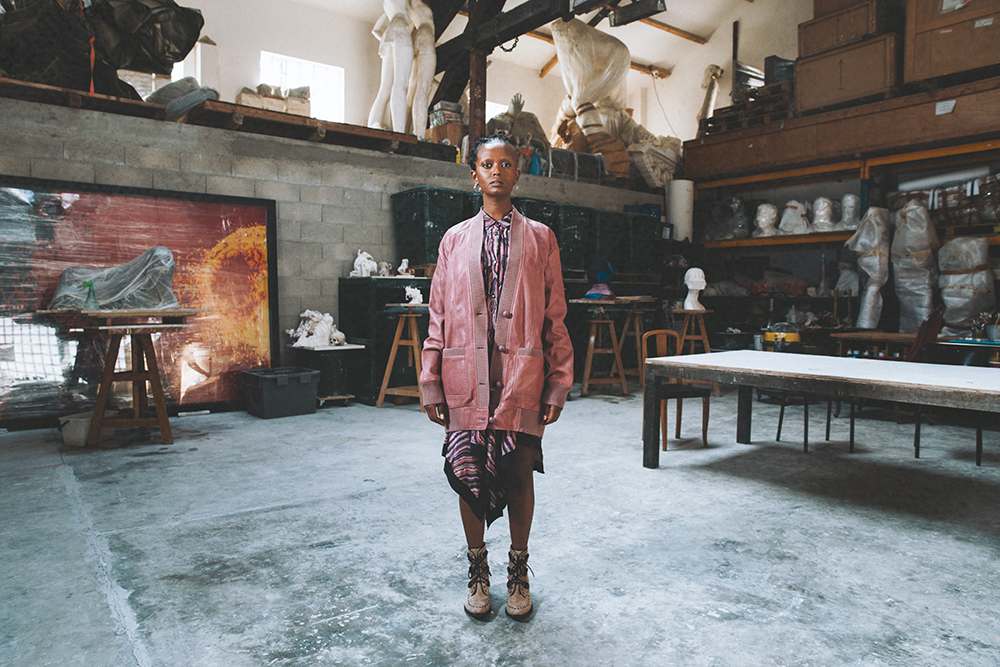
Coach – Leather Cardigan, Shirt Dress with Kaffe Fassett Print, Suede Lace Up Bootie, Buckle Earrings
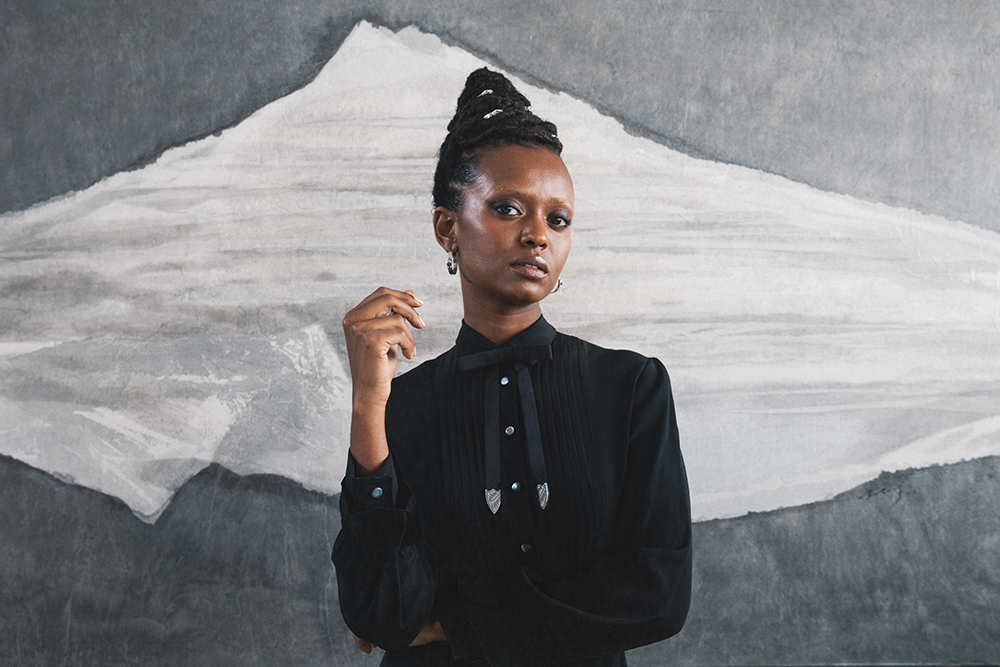
Coach – Shirt Dress, Buckle Earrings
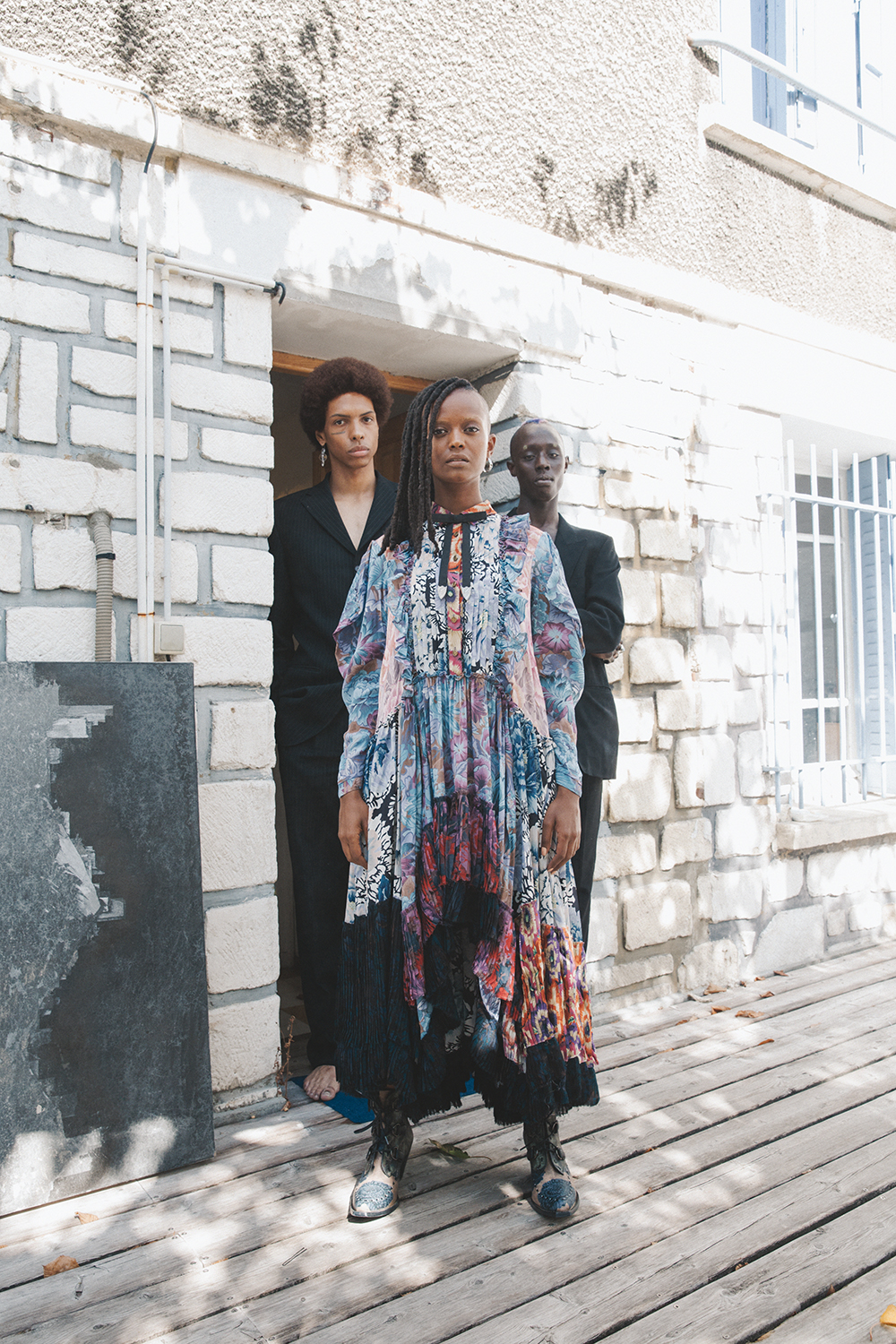
Coach – Ruffled Tiered Dress with Kaffe Fassett Print, Lace Up Bootie with Kaffe Fassett Print, Buckle Earrings
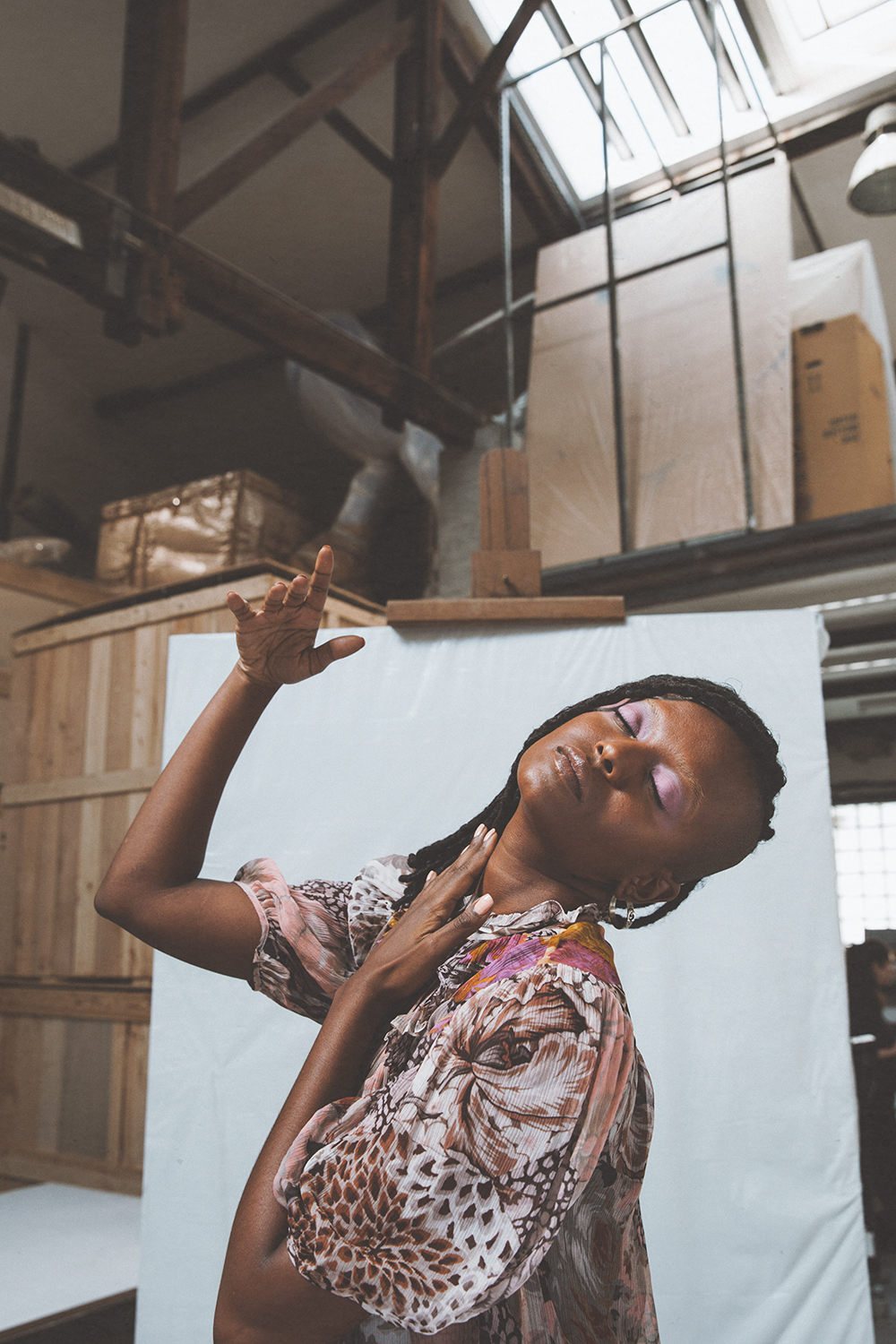
Coach – Patchwork Trapeze Dress with Kaffe Fassett Print, Buckle Earrings
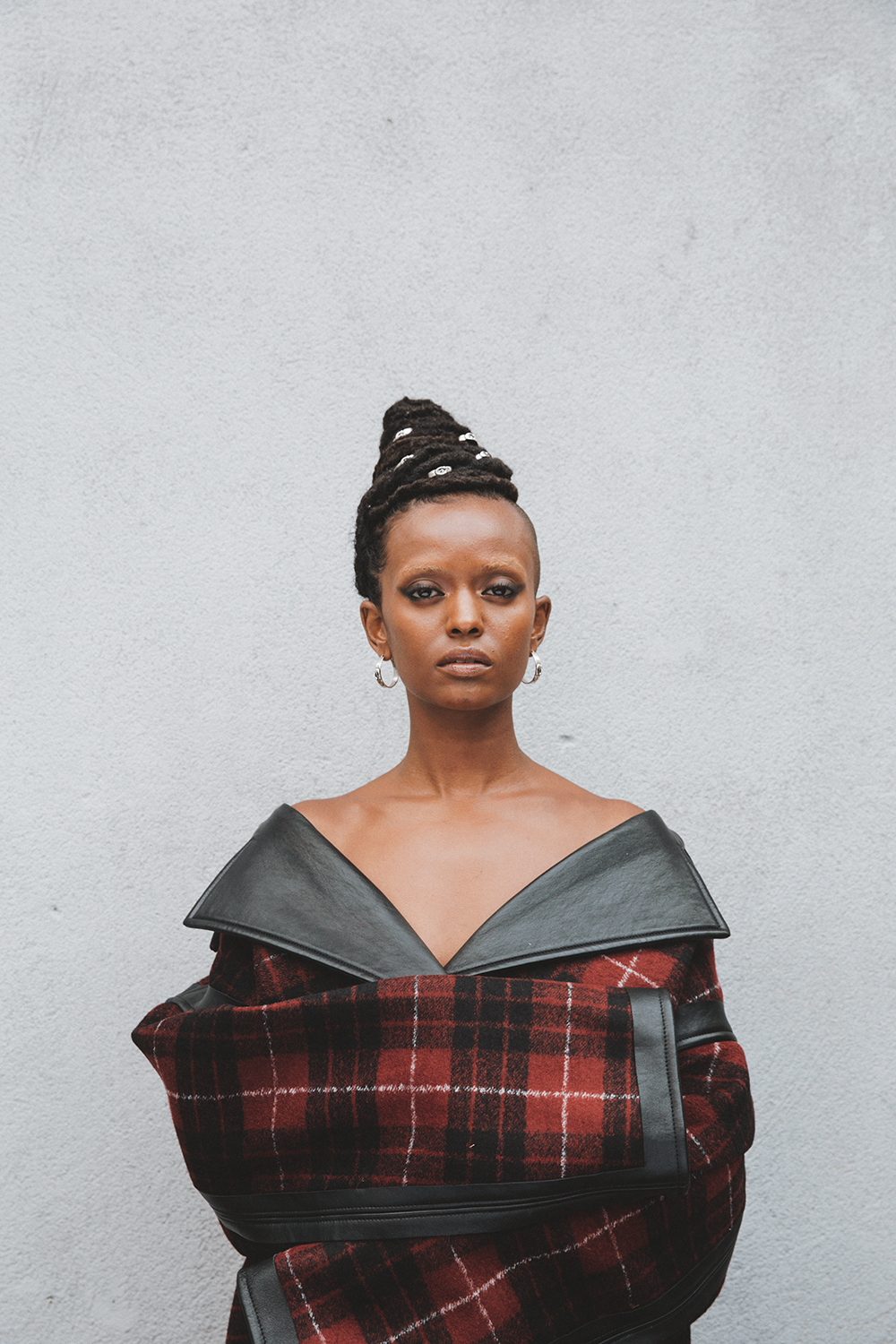
Coach – Wool Coat with Leather Details, Buckle Earrings
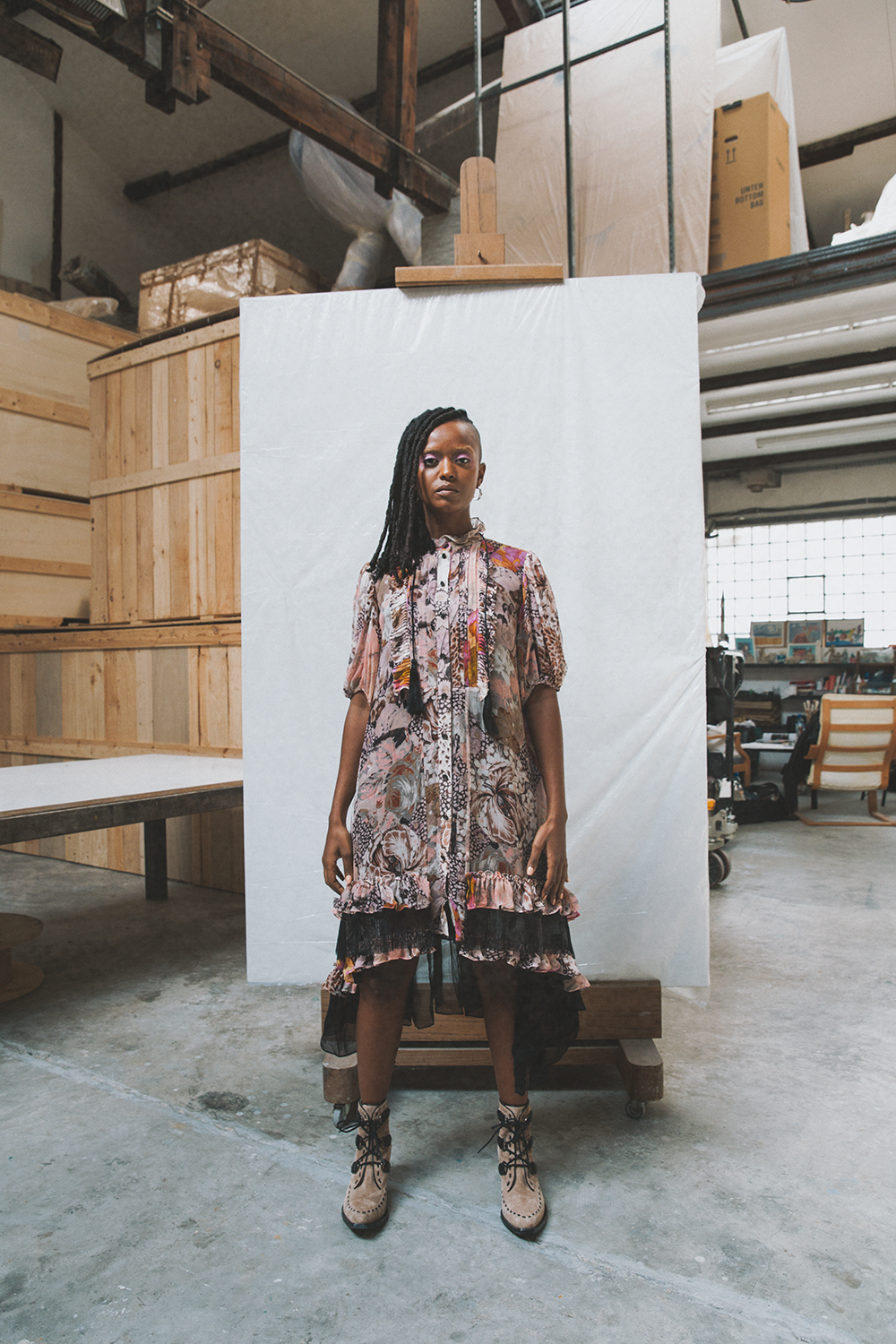
Coach – Patchwork Trapeze Dress with Kaffe Fasset Printt, Suede Lace Up Bootie, Buckle Earrings
***
Photographer: Justin French
Stylist: Edem Dossou
Models: Florian Gonzalez, Magueye Diouck
Make-up: Raisa Flowers
Hair: Suhailah Wali
Casting Director: Dourane Fall & Conan Lorendot
PA: Bryan Grandin
Photographer assistant: Clément Dauvent






